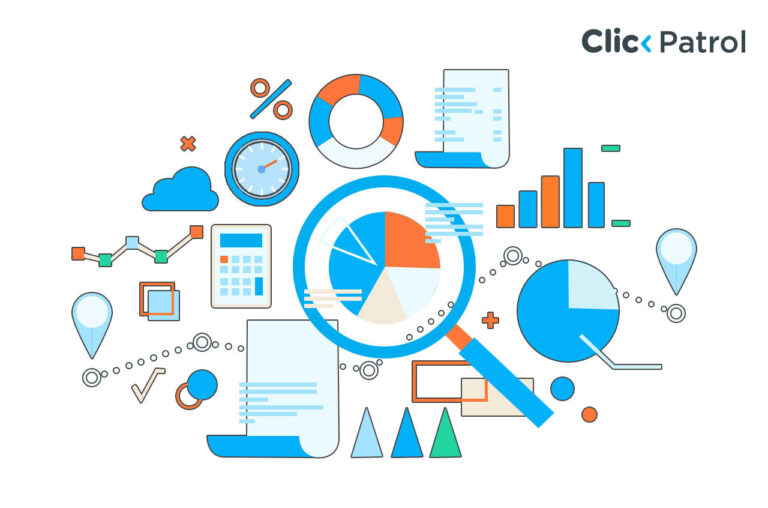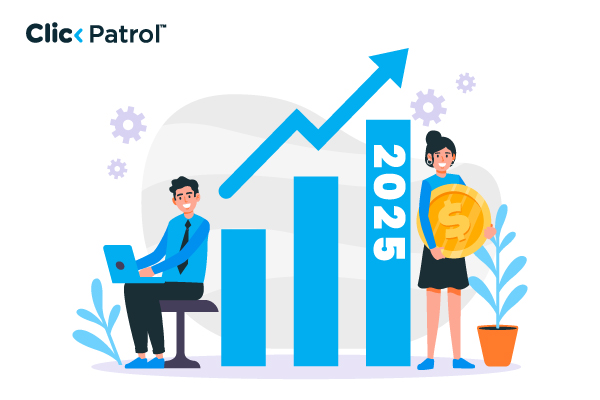
Predatory marketing strategies: Risks, real-world examples, and how to stay ethical
Abisola Tanzako | Aug 12, 2025

Table of Contents
- Understanding predatory marketing: Definition, tactics, and examples
- How does predatory marketing work?
- Examples of predatory marketing
- The pros and cons of predatory marketing
- Legal cases and consequences of predatory marketing practices
- Best practices for ethical predatory marketing
- Striking a balance between aggression and ethics
- FAQs
Several Fortune 500 brands have faced lawsuits for predatory practices, costing millions in fines and brand damage (Harvard Business Review, 2023).
Predatory marketing is a high-intensity strategy that targets competitors’ weaknesses, leverages aggressive pricing, and disrupts the market to gain a larger share.
Unlike traditional marketing, which builds brand awareness and customer engagement, predatory marketing takes a direct, offensive approach. It is sometimes ethical and other times controversial.
This article explores predatory marketing, companies’ strategies, real-world examples, and the legal and ethical implications you should know.
Understanding predatory marketing: Definition, tactics, and examples
Predatory marketing is an aggressive business strategy to weaken competitors and secure market dominance. It involves targeted attacks on rival businesses through price wars, competitive advertising, legal maneuvers, and brand hijacking.
At its core, predatory marketing seeks to exploit a competitor’s vulnerabilities. This can be done in various ways, such as:
- Lowering prices significantly to undercut competitors and attract their customers.
- Running comparative ad campaigns to highlight competitors’ weaknesses while promoting one’s brand.
- Leveraging online advertising tactics, such as bidding on competitor brand keywords.
- Strategic product launches that directly challenge a rival’s offering.
How does predatory marketing work?
Predatory marketing is a structured approach that businesses use to weaken competitors and capture market dominance. Below are the key steps in how predatory marketing works:
1. Identifying competitor weaknesses: Successful predatory marketing begins with analyzing rivals’ vulnerabilities, such as:
- High pricing: Introduce a lower-cost alternative to attract their customers.
- Poor customer service: Highlight superior service using competitor complaints and reviews.
- Outdated offerings: Provide innovative solutions where competitors lag.
2. Crafting an attack strategy: After identifying weaknesses, businesses create a plan to capitalize on them:
- Undercutting prices: Attract cost-conscious customers with lower pricing.
- Comparative advertising: Highlight advantages over competitors in ad campaigns.
- Search engine domination: Bid on competitors’ brand names in Google Ads.
- Exclusive deals: Offer limited-time promotions and loyalty rewards.
3. Deploying the strategy: Execution requires aggressive marketing across multiple channels:
- Digital advertising: PPC ads, social media, and influencer collaborations.
- Content marketing: Blogs, videos, and reports showcasing superiority.
- Email retargeting: Convert competitors’ customers with better deals.
4. Monitoring competitor reactions and adjusting strategies: Continuous tracking ensures sustained success:
- Competitor responses: Adjust strategies if rivals drop prices or counterattack.
- Market impact: Use analytics to measure increased sales and customer acquisition.
- Customer perception: Maintain an aggressive yet respectable brand image.
5. Sustaining market dominance: Once ahead, businesses should defend their position:
- Continuous innovation: Keep products/services competitive.
- Customer retention: Build loyalty through exceptional service.
- Legal compliance: Ensure tactics align with fair competition laws.
Examples of predatory marketing
Below are some well-known examples of predatory marketing tactics employed by major companies.
1. Fast food rivalries: McDonald’s vs. Burger King: McDonald’s and Burger King have a long history of engaging in direct, head-to-head marketing battles.
Both brands aggressively target each other’s customer base with competitive advertising, pricing strategies, and promotional campaigns.
- Advertising wars: Burger King has mocked McDonald’s in ads, emphasizing its flame-grilled burgers over McDonald’s patties.
- Location-based tactics: Burger King strategically places stores near McDonald’s and even offers app-based discounts for customers near McDonald’s locations.
- Price wars: Both brands constantly adjust prices, offering limited-time discounts to make competition challenging for smaller chains.
2. Smartphone wars: Apple vs. Samsung: Apple and Samsung have aggressively targeted each other in advertisements and product launches.
- Comparative advertising: Samsung’s ads often mock Apple users, highlighting the absence of features like stylus support and better battery life.
- Legal battles: Apple has filed patent infringement lawsuits against Samsung, resulting in product bans and fines.
- Product launch timings: Samsung strategically launches its flagship phones before Apple’s iPhone to capture early buyers.
3. Airline industry price wars: Budget airlines vs. full-service airlines: The airline industry is another example of predatory marketing, particularly with the rise of budget airlines like Ryanair, Spirit Airlines, and EasyJet.
- Below-cost pricing: Budget airlines like Ryanair and Spirit sell tickets at extremely low prices, making up for lost revenue through baggage and seat selection fees.
- Market entry strategies: New entrants slash fares aggressively to push competitors out before raising prices.
- Flash sales and promotions: Ryanair has offered flights as low as $10 to dominate specific routes.
The pros and cons of predatory marketing
Predatory marketing is a double-edged sword; while it provides significant advantages in market dominance and customer acquisition, it also carries risks that can backfire if not managed carefully. Below is a deeper look into its benefits and drawbacks.
Pros of predatory marketing
- Increases market share: By aggressively targeting competitors’ customers, businesses can expand their customer base rapidly, making it harder for rivals to compete.
- Boosts brand visibility: Bold, competitive marketing strategies help keep a brand in the spotlight, ensuring it stays top-of-mind for consumers. Companies that consistently engage in predatory marketing often become household names in their industry.
- Improves customer acquisition: By offering lower prices, better promotions, or superior product comparisons, businesses can attract new customers who might have otherwise chosen a competitor.
- Encourages market innovation: Competition driven by predatory tactics forces businesses to innovate continuously.
Cons of predatory marketing
- Legal and ethical concerns: Some predatory tactics, such as false advertising, deceptive pricing, or anti-competitive behavior, may violate fair trade laws. Companies engaging in these practices can face fines, lawsuits, or regulatory penalties.
- High costs: Aggressive marketing campaigns require substantial financial investment in advertising, promotions, and price adjustments. This can strain budgets, especially for smaller businesses competing with industry giants.
- Potential customer backlash: If customers perceive a company’s marketing as too aggressive or unethical, it can damage trust and lead to negative publicity. Social media amplifies consumer sentiment, making reputation management more challenging.
- Short-term gains, long-term risk: Predatory pricing and marketing can boost sales in the short run but may harm profitability over time. Once competitors are eliminated, raising prices to recover losses can drive customers away or invite new competitors into the market.
Legal cases and consequences of predatory marketing practices
Here are some notable legal cases and the resulting consequences of predatory marketing:
1. FTC v. Roca Labs (2015):
The Federal Trade Commission (FTC) accused Roca Labs, a weight loss supplement company, of using deceptive marketing practices.
The company misled consumers about the effectiveness of its products and used aggressive tactics to prevent negative reviews, including threats of legal action against unsatisfied customers.
Consequences:
- The company was ordered to pay $25 million in consumer redress.
- Roca Labs was also banned from misrepresenting their products in the future and required to provide clear and truthful disclosures.
2. Apple v. Samsung (2011-2018):
The legal battle between Apple and Samsung centered on accusations of patent infringement and predatory marketing tactics in the smartphone industry.
Apple claimed that Samsung copied the design and features of the iPhone, while Samsung accused Apple of monopolistic practices.
Consequences:
- Both companies faced significant financial losses due to legal fees and settlement agreements.
- Samsung was ordered to pay over $1 billion in damages in 2012 (though the amount was later reduced).
- This case set a precedent for patent disputes in technology and highlighted the competitive pressures that can lead to aggressive marketing and unfair practices.
Best practices for ethical predatory marketing
To leverage predatory marketing without legal or ethical violations, businesses should adopt responsible strategies:
- Focus on value instead of price wars: Instead of just undercutting prices, companies should emphasize quality, innovation, and customer experience.
- Maintain truthful advertising: To avoid legal disputes, all advertising claims should be accurate and verifiable.
- Respect competitor trademarks: Ads or SEO strategies should use a competitor’s brand name within legal guidelines.
- Prioritize customer trust: While aggressive marketing may attract attention, customer loyalty depends on ethical business practices.
- Plan for long-term sustainability: Businesses should aim for sustained growth rather than short-term market domination through unethical tactics.
Striking a balance between aggression and ethics
Predatory marketing can be a powerful strategy when used correctly and ethically. It helps businesses outperform competitors, increase market share, and gain a more substantial brand presence.
However, companies must be cautious not to engage in illegal or unethical practices, which can lead to reputational damage, customer backlash, and legal consequences.
For long-term success, businesses should focus on a balanced approach, combining competitive strategies with genuine value creation.
FAQs
Q. 1 What is predatory marketing?
Predatory marketing is an aggressive strategy where businesses attempt to eliminate competition, dominate the market, or steal customers using tactics like underpricing, direct competitor targeting, and aggressive advertising.
Q. 2 How is predatory marketing different from regular competitive marketing?
While competitive marketing highlights a company’s strengths to attract customers, predatory marketing actively targets competitors with aggressive tactics such as extreme price reductions, legal battles, or misleading comparisons to weaken or eliminate them.
Q. 3 Is predatory marketing legal?
Predatory marketing falls into a legal gray area. Some tactics, like aggressive advertising and pricing, are legal, but price-fixing, false advertising, and anti-competitive behavior can violate consumer protection and fair competition laws in many countries.





